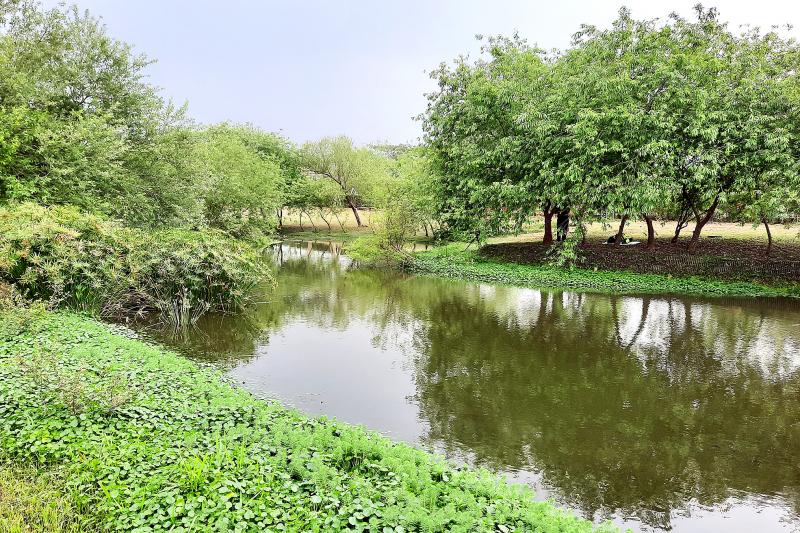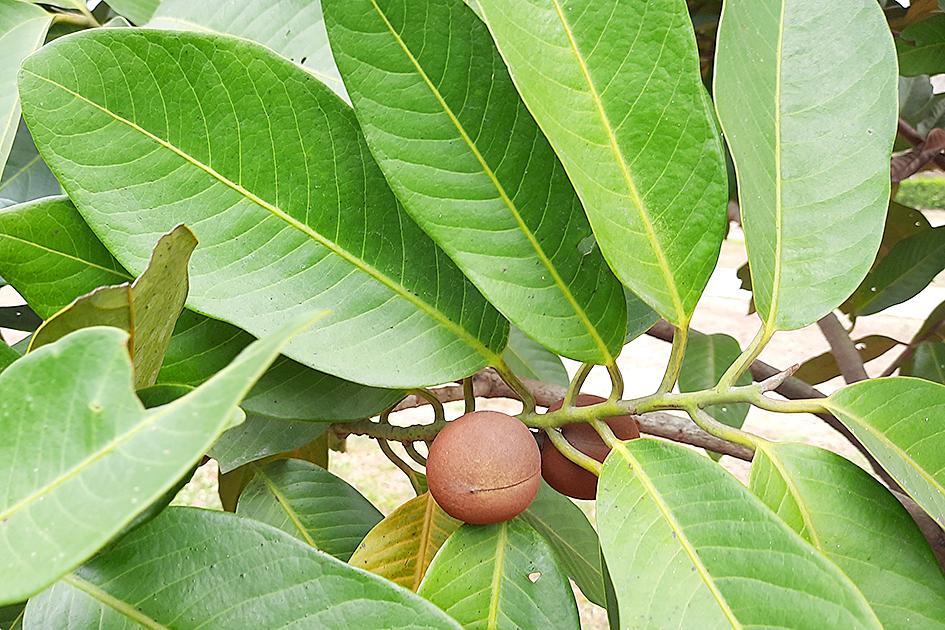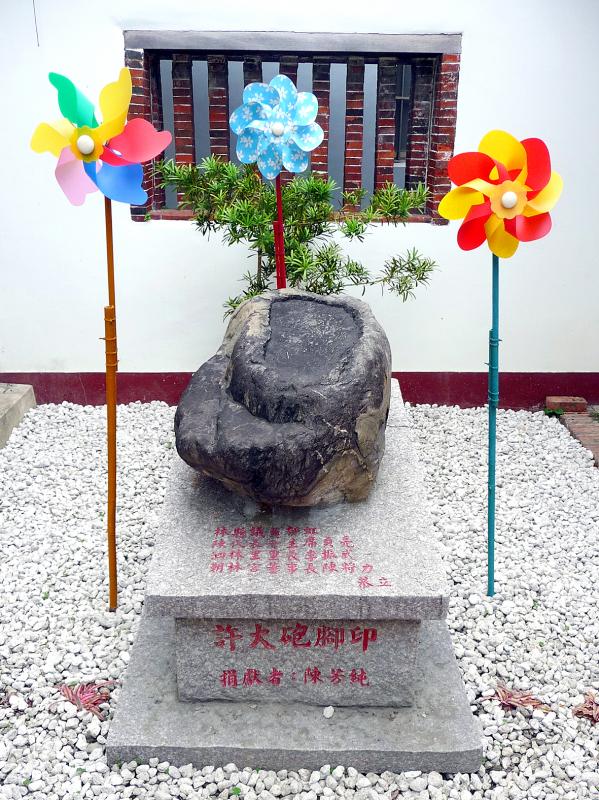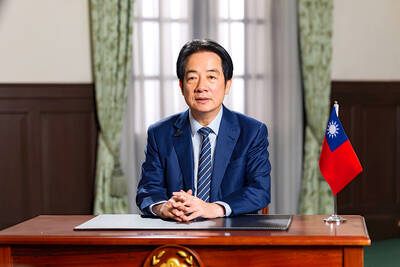It’s a question I’ve posed to government officials and run through search engines, but I haven’t been able to get a satisfactory answer: Who or what is Taiwan’s largest landowner?
Local media reports on the subject tend to focus on tycoons who own slices of downtown Taipei, or on deities such as Matsu (媽祖). In 2011, it was reported that more than 2,300 land-title certificates (presumably those of religious buildings) bore the names of gods or goddesses, and that the authorities had ordered temple management committees to show ownership by legal persons, or risk losing their real estate.
I’ve long suspected that Taiwan Sugar Corporation (台糖, TSC) could be the country’s biggest landowner in terms of area, if not value. When I asked the state-run company about this, some years ago, they told me they didn’t know.

Photo: Steven Crook
The sugar industry has been in gradual decline for decades, but TSC continues to play an important role in rural Taiwan. Some former sugar cane plantations have been rezoned for industry or housing. Some are used to grow crops other than sugar, and a substantial proportion have been afforested since the start of the 21st century.
As part of the “i-Taiwan 12 Projects,” initiated by then-president Ma Ying-jeou’s (馬英九) administration in 2009, three new lowland forests were created. One, Aogu Wetlands Forest Park (鰲鼓溼地森林園區) in Chiayi County, featured in last week’s Highways & Byways column. Another, Danong Dafu Forest Park (大農大富平地森林園區) in Hualien County, was the subject of the July 12, 2019 column. Today’s article is about the third, Linhousilin Forest Park (林後四林平地森林園區) in Pingtung County.
MANMADE PARK

Photo: Steven Crook
The 1,005 hectares of Linhousilin Forest Park lie east of Chaojhou (潮州), just a few kilometers from the foothills at the base of the Central Mountain Range. During the past 400 years, various ethnic groups have settled hereabouts, among them Makatao (馬卡道) Aborigines, Hoklo migrants from 1635 onward, and then Hakka families a few decades later.
The forests that covered the plain hundreds of years ago were gradually cleared. During the 20th century, much of the cultivated land was switched between rice and sugar, depending on commodity prices and the priorities of Taiwan’s rulers.
From Chaoyi Road (潮義路), the forest — which opened to the public in 2014 — looks more like a city park than a true woodland. In a decade or two, the canopy will be thicker, but I don’t expect it’ll resemble a true wilderness because the trees are evenly spaced.

Photo: Steven Crook
Recreation and education are among the primary goals of the three lowland forest parks. At Linhousilin, areas demonstrate farming, irrigation, and soil improvement techniques. I found the ecological pond especially interesting.
I already knew that shell-ginger leaves are used to wrap various foods, including glutinous rice dumplings (zongzi, 粽子) and the Paiwan community’s cinavu. The latter, if you’ve never eaten it, is a tube of meat and taro paste. But before reading a bilingual information panel, I didn’t know that shell-ginger seeds can be made into a throat-soothing decoction.
Various dragonflies buzzed around the pond, and I discovered from another panel that these beautiful insects help keep mosquito populations in check, because they eat these pests during both the larval and flying stages of their lives. The moment I read that, I felt it’s something I should have learned a long time ago.

Photo: Steven Crook
If you don’t go to Linhousilin Forest Park by bicycle, as I did, consider borrowing one when you arrive so you can see much more of the park. Bikes can be rented at the visitor center for NT$100 for the first hour, NT$50 for the second and subsequent hours.
Inside the visitor center, Chinese-language displays explore climate change, carbon sequestration and forest management.
With a bicycle, or a good pair of legs, it’s possible to explore beyond the formal boundaries of the park, which is surrounded by rectangles of land given over to watermelon cultivation or reforestation projects.

Photo: Steven Crook
I didn’t see a soul as I cycled slowly along the service roads. On some plots, every scrap of ground surrounding the trees was covered by understory. In other places, presumably for good reasons, almost everything except the trees themselves had been cleared.
CHAOLIN TEMPLE
Leaving the park by heading south and then west, I made my way to Chaolin Temple (朝林宮), which was founded in the 1850s. The temple is on Tongchao 1st Lane (通潮一巷) in Silin Borough (泗林里).

Photo: Steven Crook
It’s an attractive shrine, and the story behind it is memorable. A farmer surnamed Chen (陳) worshipped an icon of Prince Taizi (太子) in his home, and donated a plot of land so a proper temple could be built. He hesitated, however, when a fengshui master advised him that, if a shrine were constructed there, it would imperil his descendents.
Prince Taizi himself backed the temple proposal. Some years after the land had been set aside, soon after the fengshui master had died, the deity began to appear in dreams to another member of the Chen clan. The prince warned that, because the temple hadn’t been built, the village would endure torrential rains.
Soon enough it was pouring down, and the village was flooded. The fengshui master’s coffin — it’s not clear whether he’d already been buried or not — was washed into a large pond. At first, the coffin floated. It’s said to have completed three circuits of the pond before sinking without trace. In traditional Han thinking, this is one of the worst fates that can befall a person after death.

Photo: Steven Crook
The temple also displays the Hsu Ta-pao Footprint (許大砲腳印), a stone with a footprint-like indentation, apparently left by a giant-like man whose behavior alternated between the heroic and the embarrassing.
Before riding back to Chaojhou Railway Station, there was one more sight I wanted to see: Silin Walking Trail (泗林健走步道), sometimes called Chaojhou Green Tunnel (潮州綠色隧道). The 1.2km-long road near the intersection of Highway 1 and Pingtung Local Road 110 is shaded by almost 500 mature Madagascar almond trees.
Arriving just after four o’clock on a weekday, I shared the road with a few joggers and pedestrians. On weekends, it surely gets crowded — and I don’t need a deity to appear in my dreams to convince me of that.
Steven Crook has been writing about travel, culture, and business in Taiwan since 1996. He is the co-author of A Culinary History of Taipei: Beyond Pork and Ponlai, and author of Taiwan: The Bradt Travel Guide, the third edition of which has just been published.

This month the government ordered a one-year block of Xiaohongshu (小紅書) or Rednote, a Chinese social media platform with more than 3 million users in Taiwan. The government pointed to widespread fraud activity on the platform, along with cybersecurity failures. Officials said that they had reached out to the company and asked it to change. However, they received no response. The pro-China parties, the Chinese Nationalist Party (KMT) and Taiwan People’s Party (TPP), immediately swung into action, denouncing the ban as an attack on free speech. This “free speech” claim was then echoed by the People’s Republic of China (PRC),

Exceptions to the rule are sometimes revealing. For a brief few years, there was an emerging ideological split between the Democratic Progressive Party (DPP) and Chinese Nationalist Party (KMT) that appeared to be pushing the DPP in a direction that would be considered more liberal, and the KMT more conservative. In the previous column, “The KMT-DPP’s bureaucrat-led developmental state” (Dec. 11, page 12), we examined how Taiwan’s democratic system developed, and how both the two main parties largely accepted a similar consensus on how Taiwan should be run domestically and did not split along the left-right lines more familiar in

Many people in Taiwan first learned about universal basic income (UBI) — the idea that the government should provide regular, no-strings-attached payments to each citizen — in 2019. While seeking the Democratic nomination for the 2020 US presidential election, Andrew Yang, a politician of Taiwanese descent, said that, if elected, he’d institute a UBI of US$1,000 per month to “get the economic boot off of people’s throats, allowing them to lift their heads up, breathe, and get excited for the future.” His campaign petered out, but the concept of UBI hasn’t gone away. Throughout the industrialized world, there are fears that

The Democratic Progressive Party (DPP) controlled Executive Yuan (often called the Cabinet) finally fired back at the opposition-controlled Legislative Yuan in their ongoing struggle for control. The opposition Chinese Nationalist Party (KMT) and Taiwan People’s Party (TPP) acted surprised and outraged, but they should have seen it coming. Taiwan is now in a full-blown constitutional crisis. There are still peaceful ways out of this conflict, but with the KMT and TPP leadership in the hands of hardliners and the DPP having lost all patience, there is an alarming chance things could spiral out of control, threatening Taiwan’s democracy. This is no